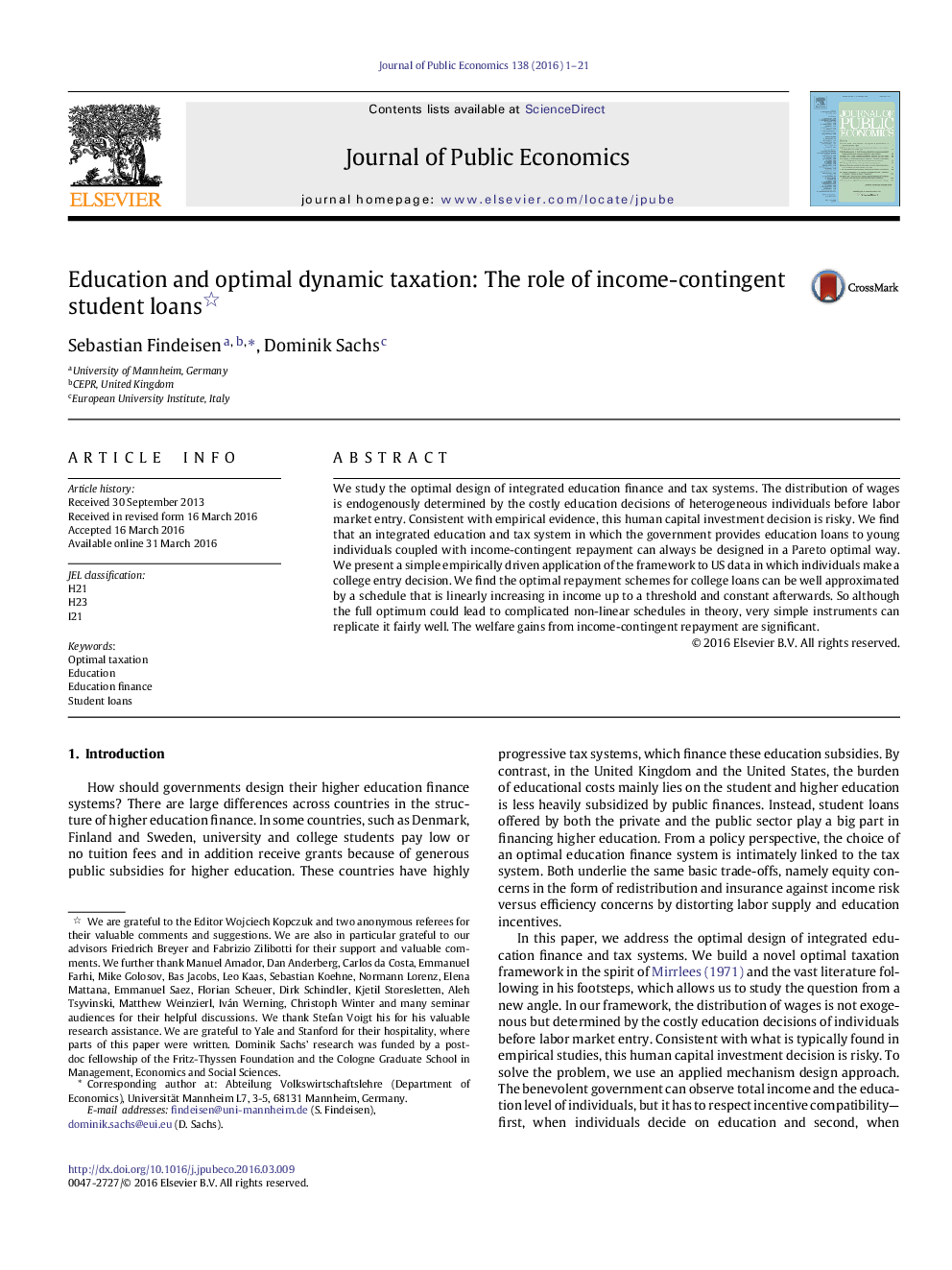| Article ID | Journal | Published Year | Pages | File Type |
|---|---|---|---|---|
| 968934 | Journal of Public Economics | 2016 | 21 Pages |
•We study the optimal design of integrated education finance and tax systems.•We find that an educationloan system coupled with income-contingent repayment can always be designed in a Pareto optimal way.•We present a simple empirically driven application of the framework to US data.•We find the optimal repayment schemes for college loans can be well approximated by a schedule that is linearly increasing in income.•So although the full optimum could lead to complicated non-linear schedules in theory, very simple instruments can replicate it fairly well.
We study the optimal design of integrated education finance and tax systems. The distribution of wages is endogenously determined by the costly education decisions of heterogeneous individuals before labor market entry. Consistent with empirical evidence, this human capital investment decision is risky. We find that an integrated education and tax system in which the government provides education loans to young individuals coupled with income-contingent repayment can always be designed in a Pareto optimal way. We present a simple empirically driven application of the framework to US data in which individuals make a college entry decision. We find the optimal repayment schemes for college loans can be well approximated by a schedule that is linearly increasing in income up to a threshold and constant afterwards. So although the full optimum could lead to complicated non-linear schedules in theory, very simple instruments can replicate it fairly well. The welfare gains from income-contingent repayment are significant.
